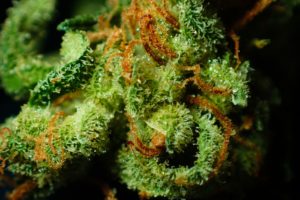March 20, 2019
 A widely reported study appearing today in the British journal The Lancet alleges that an estimated 30 to 50 percent of psychosis cases in Europe are due to cannabis exposure, and that exposure to elevated levels of THC increases this risk.
A widely reported study appearing today in the British journal The Lancet alleges that an estimated 30 to 50 percent of psychosis cases in Europe are due to cannabis exposure, and that exposure to elevated levels of THC increases this risk.
NORML has previously written on the data showing a multi-directional association between cannabis and psychiatric illnesses, and we have cautioned that those predisposed to psychosis or other disorders may be at higher risk for adverse events.
That said, it remains premature at best, and sensational at worst to claim that a causal relationship exists between marijuana use and psychiatric disorders on the basis of this new paper. That is because, by the observational nature of its design, this study at best can only demonstrate a correlation.
Nonetheless, despite this limitation, the authors boldly “assume causality.” Given the fact that such a cause-and-effect relationship remains unproven and there as of yet exists no consensus among experts that such causation exists, their assumption is, at best, highly questionable.
Moreover, it is well established that those with psychiatric illness typically use all intoxicants at greater rates than do the general public, so the fact that those admitted to institutions for first-episode psychosis are more likely to consume cannabis than are those in the general population is hardly surprising. But it is not evidence that marijuana in any way causes the condition. Rather, this association may exist because many psychiatric patients are self-medicating with cannabis. Or, this relationship may persist because many people predisposed to psychosis are similarly predisposed to also using cannabis — a theory that is supported by many experts in the field.
Perhaps most importantly, the fact that cannabis has been used by various populations for decades at disparate rates, yet rates of psychosis and other psychiatric disorders have generally remained static over this same period of time, strongly argues against a direct causal relationship.
Finally, authors’ presumptions specific to the supposed disparate effects of cannabis based upon THC potency are also highly questionable. This is because subjects in the study self-reported their cannabis use. As a result, authors had no ability to verify the THC content of the marijuana consumed by participants. Further, the cannabis consumed by subjects in the study was largely obtained via black market channels — leaving the users equally in the dark with regard to its actual cannabinoid content.
Nonetheless, despite these limitations, the concerns raised in this paper and others ought to be taken seriously, and they provide an argument in favor of greater regulation of the plant so that it can be better kept out of the hands of young people and those who may be at higher risk for an adverse reaction. But maintaining cannabis prohibition, unfortunately, achieves neither result. Placed in this context, these latest scare-mongering claims — even if taken at face value — do little to advance arguments in favor of tightening prohibition, and provides ample ammunition to wage for its repeal.















